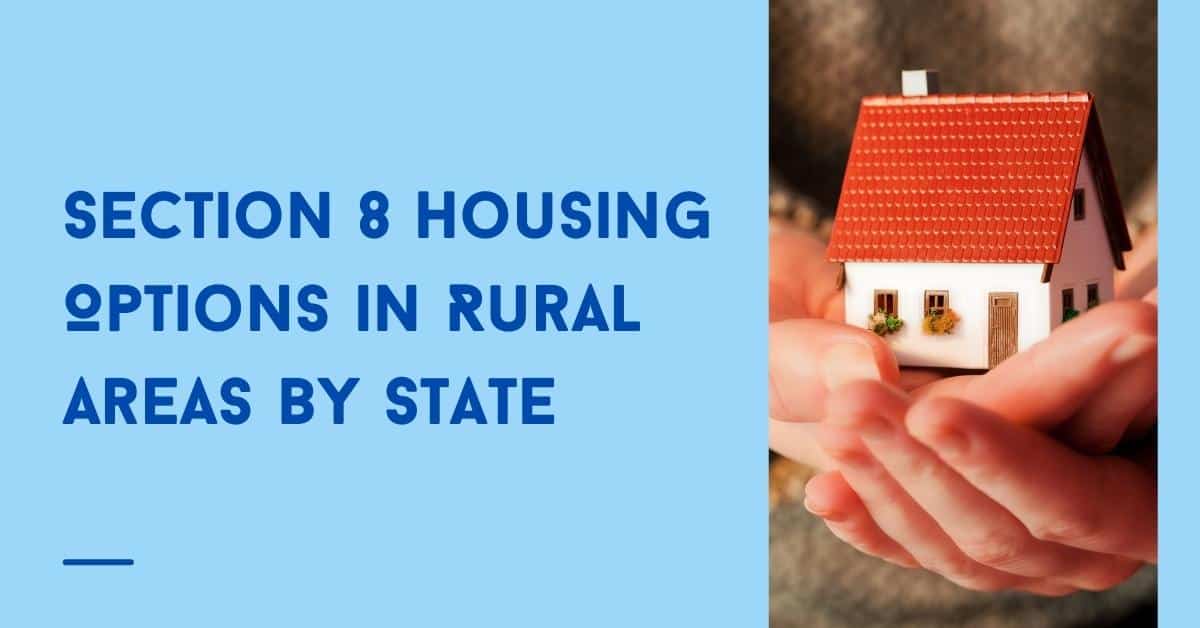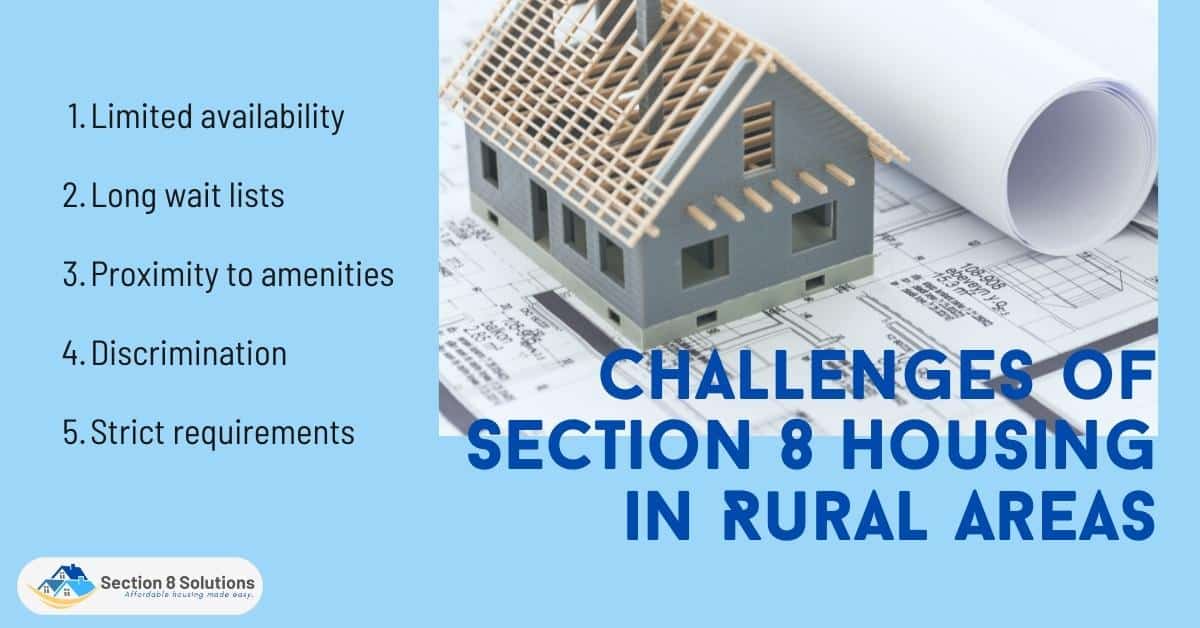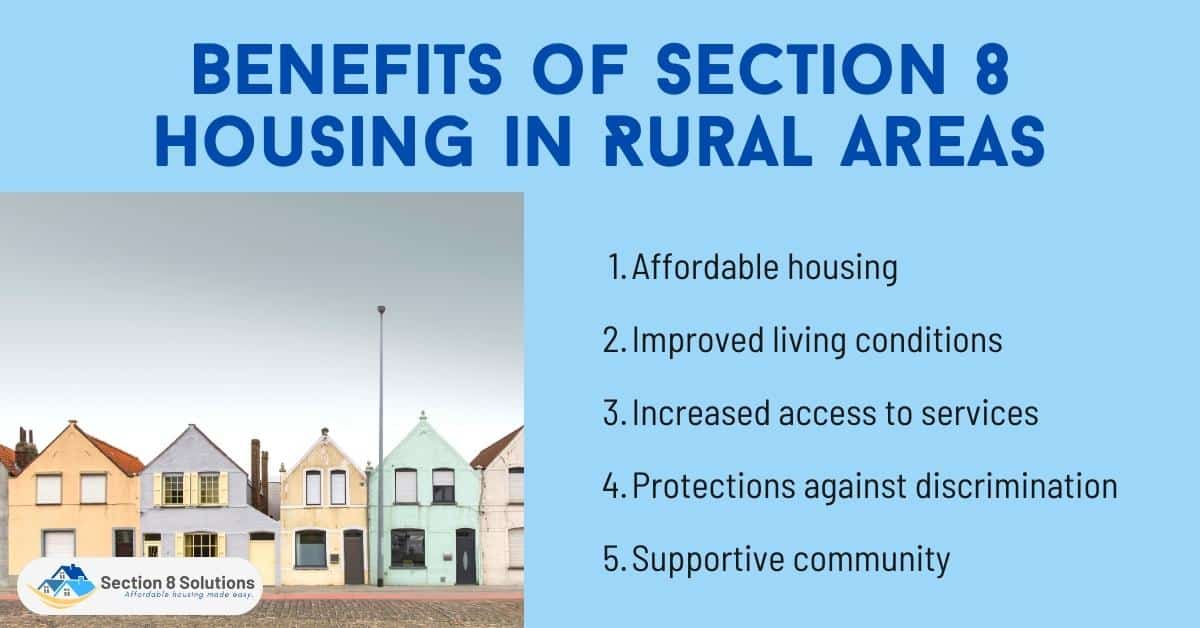Many people are unaware of the options available to them when it comes to Section 8 housing in rural areas. However, each state has unique programs and opportunities for low-income families and individuals. Understanding the options available in your state is crucial to finding the best fit for your family or individual needs.
This blog post will discuss the challenges, benefits, and state-specific Section 8 housing options in rural areas. Learn how this program can help your family secure a better future!

Section 8 Housing in Rural Areas
Section 8 housing provides financial assistance to households in rural areas who are struggling to make ends meet. This program helps individuals and families find and afford safe, decent, quality housing by connecting them with low-income rental homes.
Section 8 can also help those in rural areas save on energy bills with additional insulation and energy-efficient appliances or through improved heating or cooling systems. Additionally, voucher holders are provided with rights and protections against discrimination based on their voucher status as members of the household.
Section 8 has been a critical lifeline for rural America’s most vulnerable households to access safe and affordable housing options.

Challenges of Section 8 Housing in Rural Areas
Living in a rural area can present a unique set of challenges for Section 8 housing, making it harder to obtain or afford adequate housing. With population sizes often much smaller than their urban counterparts, cities and towns located outside of metropolitan areas may struggle to provide neighborhood options that meet government standards.
Additionally, the cost of living in rural areas could be higher due to lower workforce wages and limited opportunities for employment. All these components affect the availability and experience of utilizing Section 8 housing in rural areas.

1. Limited availability: Because of the smaller population in rural areas, there are often fewer landlords and rental homes available for Section 8 voucher holders.
2. Long wait lists: Many states have long wait lists for Section 8 vouchers, making it difficult to obtain housing assistance quickly.
3. Proximity to amenities: Many Section 8 voucher holders may have difficulty finding housing close to public transit, grocery stores, and other vital services.
4. Discrimination: There are some landlords who refuse to accept Section 8 vouchers due to bias and discrimination against lower-income tenants.
5. Strict requirements: The eligibility criteria for the program can be difficult to meet, especially for individuals in rural areas with limited income sources.
Benefits of Section 8 Housing in Rural Areas
Section 8 housing is a government-subsidized program designed to provide affordable rental options for qualifying households. In rural areas, this form of public assistance can provide ample opportunities for those struggling to make ends meet.
Through this program, families and individuals gain access to safe and secure living conditions at an affordable cost. With the many benefits that Section 8 housing offers in rural areas, it can be a beneficial way to assist those facing financial hardship.

1. Affordable housing: Section 8 vouchers make it easier for low-income families and individuals to find safe and affordable housing solutions in rural areas.
2. Improved living conditions: Through this program, households may receive additional insulation, energy-efficient appliances, or improved heating or cooling systems to save on energy bills.
3. Increased access to services: Many Section 8 voucher holders are able to find housing options close to public transportation, grocery stores, and other essential services.
4. Protections against discrimination: Voucher holders are protected from discrimination based on their income level or voucher status as members of the household.
5. Supportive community: The program provides financial relief and stability to households in rural areas, allowing them to better participate in their community.
State-Specific Section 8 Housing Options in Rural Areas
State-specific Section 8 housing options can be hard to come by in rural areas. Most Section 8 housing is concentrated in larger populated areas, and dedicated programs for rural housing can be difficult to find. That being said, some states are making efforts to provide more resources for rural communities.
Special qualifications can make certain family members eligible for state-level programs, such as elderly individuals or those with disabilities who may need extra assistance finding an affordable living situation. Additionally, participating in one of these state-sponsored programs could open doors to other assistance opportunities.
This includes job training or financial literacy courses that could lead to economic opportunities in the future. Looking into options such as these may prove beneficial for people looking for a safe and affordable home in a rural area.
For more information on State-Specific Section 8 Housing Options in Rural Areas, visit the official website of the U.S. Department of Housing and Urban Development here.

Conclusion
Section 8 housing in rural areas provides a lifeline for individuals and families struggling to make ends meet. With the many challenges that come with this form of public assistance, it is important to understand the options available in your state so you can find the best fit for your family or individual needs.
By researching state-specific programs and learning your rights as a voucher holder, you can make the most of Section 8 housing opportunities in rural areas. With this knowledge and support, you can find an affordable living situation that provides security and stability for yourself and your family.










